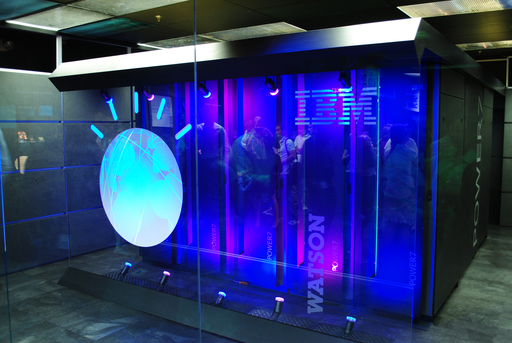
Has the Cloud Computing revolution been overhyped?
Let's be honest, technology forecasts such as Gartner's Hype Cycle aside, who really thinks Cloud Computing is a hot and happening topic anymore for businesses?
Well, quite a few people and companies as it turns out.
According to them Cloud Computing is barely out of its infancy and a range of IT solutions are yet to fully leverage the rainmaking potential of the Cloud.
Old Kids on the Block
The brave new world of Cloud Computing has its share of sexy new startups--BrightTag, Cedexis, and Hytrust, to name a few that are on CIO Magazine's list of 10 Hot Cloud Startups to Watch. It also has the heavyweight early movers like Amazon spin-off Amazon Web Services (AWS) which has notched up $3 billion in revenues.
However it's the battle-scarred veterans of the tech industry like IBM, HP, and Oracle, who after a relatively slow start have pulled out all the stops to transform their offerings for a Cloud-centric enterprise. Dennis Quan, VP of IBM's Cloud Infrastructure Services, says, "IBM has been quietly investing, as we typically do before going after a new market, for nearly three years in Cloud offerings that can solve specific needs of a business. These cloud- based business applications meet a variety of industry needs-- marketing, HR, procurement, etc." IBM's created SmartCloud- which Quan claims is the most secure, most robust Cloud architecture in the market.
Enterprise Cloud Computing is the new mantra and even the Central Intelligence Agency is getting on the act, with a $600 million contract that AWS won over stiff competition from IBM.
Opportunity Cost
The trouble in the technology business is that any X-factor rapidly becomes commoditized and it has been no different for entry level Cloud services. Microsoft, Google and AWS are already locked in a price war, with AWS dropping prices by 26% and Microsoft announcing it will match these prices.
This presents something of a dilemma for a company like IBM which has traditionally seen itself as a provider of high value solutions. In the past it has had to exit a commoditized business, like when it sold its PC business to Lenovo. Quan points to IBM's $4 billion in acquisitions of Cloud-based solution providers like Kenexa (HR), Emportis (procurement), and Coremetrics (analytics) as evidence of the company's strategy to focus on the high value Cloud solutions space.
Importantly, Cloud Computing is forecast to be a $200 billion plus market by 2020. Mobile and social applications are driving innovation as businesses not only have to cater to customers demanding such access but also their employees. Additionally, there are certain markets which were traditionally considered lagging in Enterprise IT adoption that have skipped directly to the mobile cloud--IBM recently announced such a deal in Africa worth $40 million.
Competition and Cooperation
So what will separate the winners from the losers among the Cloud providers? Will this only be about innovation or are there other factors at play as well?
Experts like Quan believe that while innovation is necessary, experience in managing the increasingly complex Cloud ecosystem is the real differentiator. He says, "Delivering SaaS with high standards globally across industries, geographies, company sizes, and roles is where the complexity lies. Very few can pull this off successfully."
Open standards are a key aspect of ensuring that Cloud solutions are interoperable, both with other Cloud-based systems and legacy IT infrastructure. Quan says that the next big frontier in Cloud is integration, "We have started to solve some of this, but deeper investment will help drive IBM leadership here."
That's also driving initiatives like the OpenStack Foundation which has 1,000 companies as members today, driving open standards for the Cloud. Just this year there have been OpenStack Summits in San Diego, Portland, and even Hong Kong where participants have been sharing best practices and technologies under an open license.
To see companies like Oracle and HP, which have built their balance sheets on proprietary products embrace open standards so readily is a pointer to how Cloud Computing is transforming the world of Enterprise IT.
Government under a Cloud
As perceptions about the robustness and security of Cloud solutions become more positive, late adopters of this technology are queuing up as well. One such late adopter is the US government, and while the shutdown may have led you to believe otherwise, it has big bucks to spend when it comes to IT solutions.
An IDC report puts FY 2014 spending by the federal government at $1.7 billion. The Whitehouse.gov website has published a document called the U.S. Federal Cloud Computing Strategy which provides an insight into how the government plans to leverage the Cloud for its needs. There's even a buzzword called Cloud First doing the rounds of Washington DC to accelerate Cloud adoption in government agencies.
Companies which have traditionally been major suppliers and partners to government IT programs have taken the lead in pitching their Cloud solutions--IBM has set up a 500-person Federal Cloud Innovation Center in Washington DC. In another development the US General Services Administration--the government's procurement arm--awarded a five-year $30 million contract to IBM for its SmartCloud solution.
These examples are just of Big Government. Imagine the potential that exists in city councils and other local government as they try and realize the same efficiencies as larger organizations.
Chief Cloud Officer
Traditional IT vendors have been used to worshipping at the altar of an organization's Chief Information Officer (CIO). The impact of Digital, Social, and Mobile in the past decade has marked a shift in IT influence and budgets in an organization from the CIO to the Chief Marketing Officer (CMO).
Quan underlines this shift, "More than ever we are seeing the role of CMOs overlap with CIOs driven by today's global distributed workforce, the explosion of mobile devices, influence of social networks and the age-old adage-'needing to do more with less IT resources. In fact, it is estimated that by 2017, CMOs will spend more on IT than CIOs."
So does the advent of the Cloud now require a new job definition, the Chief Cloud Officer? A person whose job is to mesh the different public and private clouds that a large organization must maintain to handle its enterprise computing needs effectively.
Enterprise IT departments have often in the past been accused of having their heads in the clouds, paying little attention to an organization's actual needs. In the ultimate irony, if businesses are to compete successfully in the future, they better have their heads in the Cloud.
